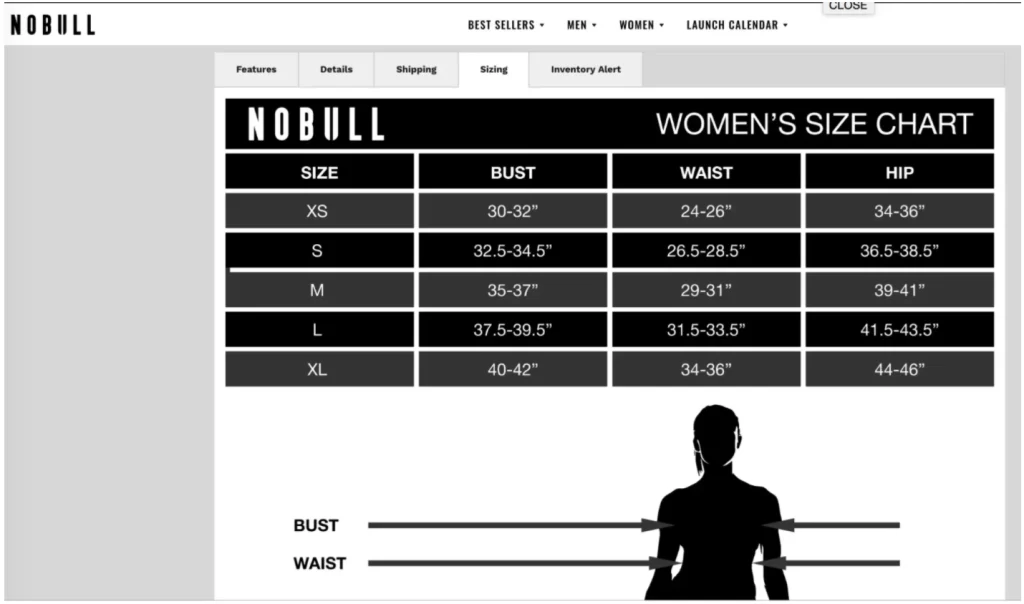Blog



Returnalytics: Should You Make Returns Easier for Shoppers or Easier for Merchants?

About the Episode
Welcome to the recap of our 2nd Returnalytics podcast episode! The Returnalytics podcast discusses the latest retail trends, technology, and best practices for managing an ecommerce business and retail returns.
On our podcast, we’ll be having conversations with the best and the brightest in the online shopping ecosystem (ecommerce store owners, partners, and thought leaders) while we do our own digging to uncover the real truth behind running an ecommerce store.
We encourage you to listen in as we uncover how retailers can manage and optimize their returns strategy, saving time, and labor, and ultimately increasing customer loyalty and lifetime value.
In this episode, we tackled a very common returns question:
Should you make returns easier for shoppers or easier for merchants?
We’ve done the research to clear some things up and the results may surprise you.
Listen to the full episode on Spotify or get the summary below.
About the Speakers
Travis Farey
Travis is a Product Marketing Specialist at ReturnLogic. Travis graduated from Shippensburg University with a Bachelor of Science in Supply Chain Management & Marketing. Travis has been working for ReturnLogic for over 2 years and started out as a Customer Support Specialist before working his way into Product Marketing.
David Gonzalez
David is a Senior Growth Manager at ReturnLogic, previously working as a Product Marketing Manager. David has prior startup experience formerly working at Drip and WhenIWork. He works closely with the Product, Sales, and Marketing teams at ReturnLogic to act as the voice of the customer and how to understand the ecommerce market.
Podcast Takeaways
While making returns easier for the shopper may be profitable for some retailers, it can be detrimental to others if the operational business side of returns management is poorly executed.
In such cases, convenient return policies for shoppers can lead to high return volumes that become hard to handle, and the customers are the ones to pay the price.
While initiating a return might be easy, getting the actual return processed becomes tedious and frustrating if:
- The customer can’t track the return each step of the way
- They initiate an exchange and still don’t get the right item
- They get marketed to about a product they previously returned
- Processing time takes forever
- Shipping costs outweigh the cost of the returning product itself
There is no ONE right solution for every retailer. But, it’s important to take all parts of the returns process and those involved into account when establishing a returns management system.
Ultimately, it’s a balancing act between making sure you make the returns process as easy as possible while also making it easy for your team, while also staying profitable.
References
- Klarna Report
- Coffee & Commerce: Optimizing CLV in the Post-Purchase Experience with Whiplash’s Marco de Paulis
- The Impact of Discounts on Shopify Customer Lifetime Value
- Which Customers Return the Most Purchases and Why? | Chain Store Age
- 3 Ways to Optimize Your Ecommerce Returns Process
- Pitney Bowes Returnament Report
- 3 Steps to Improve Your Product Descriptions with Returns Data
- How the Ecommerce Returns Process Impacts the Customer Experience
- Reality Bites as Zara Charges for Online Returns | Retail Tech Innovation Hub
- Choosing Between a Post-Purchase and Operational Software
- Ecommerce Product Return Rate Stats and Trends | Invesp
Episode Transcription
Travis Farey – 0:00
Welcome to ReturnAlytics: Fact or Faux
On this show, we discuss common returns and e-commerce myths, then using relevant data, we determine if the selected myth is fact or faux.
On today’s episode we’re discussing a topic that every business needs to make a decision about.
What is better for growth and profit? Making returns easier for shoppers? Or making returns easier for your team?
My name is Travis Farey, and I am a Product Marketing Specialist here at ReturnLogic
And today I am joined by David Gonzalez Senior Growth Manager here at ReturnLogic
Without further ado, let’s get this show started.
Travis Farey – 1:10
Let’s start off with an interesting statistic. According to a report done by Klarna, 84% of online shoppers would say goodbye to a retailer after a bad return experience.
What does that number mean to you, David?
David Gonzalez – 1:25
Yeah, that’s a great call out and a great stat there. One thing I want to highlight is I think there’s a misconception that making returns easier for shoppers is synonymous with a good returns experience.
To me, that’s incomplete and only part of the picture.
So, what if I make initiating returns super easy for shoppers, but
- my customers still don’t get the right item again or
- they can’t track the return of each stage or
- it takes days to get a replacement, maybe even weeks or
- what if it costs me as much to return an item as I need to buy something due to high shipping costs or
- what if I’m, you know, getting marketed to about a product that I returned because I didn’t like it.
These are all experiences I’ve had personally. And while it was great to be able to return something easily, that was really only half the battle.
Not to mention, a lot of these companies that I’m shopping with that make returns super easy tend to encourage exchanges with some sort of credit in hopes that it would save the sale and to some extent that works really well.
But on the other hand, now I know anytime I order, I can return an item, get additional credit for it and, if I’m patient enough, I can get a discount on pretty much anything I buy.
My customer lifetime value goes down. I know the response from retailers to that is going to be, you know, you can monitor this stuff. You can even choose to blacklist me.
However when companies do that, they may inadvertently be punishing their best shoppers. Customers who buy the most, likely return the most.
If you prevent them from making a return, you basically just lost that customer and all of their future purchases.
So the impact returns have customer lifetime value is definitely not talked about enough. Sorry, I know I’m going a little bit of a tangent there, Travis. But what do you think?
Travis Farey – 3:16
Yeah, I agree with you 100 percent. I think that’s super interesting.
I think the big distinguisher here that we need to take away is that making the process of actually submitting the return easier for the shopper, isn’t actually improving your returns process.
So if you have an issue with, you know, the operation side of your returns process, just having a really easy really, you know, nice looking return policy isn’t really gonna help you out when it comes down to the shopper getting what they want. So, we’re seeing that there’s actually two sides.
There’s the policy that the shopper is gonna see, you know, maybe I get it free exchange shipping. Maybe I have 120 days to return my items and, you know, maybe I can even get a printer lists label right on my phone to take to UPS and get my package set.
But then the other side where, you know, retailers are lacking is the operation side.
So making sure that when the new product actually gets sent to the shopper, it’s the correct product going out. And they’re not getting, you know, the wrong product for a second time. And then also getting that product to the shop or in a reasonable period of time.
You know, if I’m the shopper, I’m already kind of upset that my product wasn’t what I wanted it to be. So if I wanted to exchange, you know, I’m hoping to get that sure within, you know, a few days a week. Maybe.
So. Yeah. Like I said, the big distinguisher here is that actually making it easier for the shopper to submit the return is really only half the picture.
David Gonzalez – 4:52
Exactly. But that distinction is so important.
So I was reading this study from Pitney Bowes the other day and they basically, they stated that returns cost retailers on average 21% of order value.
Returns cost retailers on average 21% of order value.
Study from Pitney Bowes Tweet
That’s an insane metric to me. And if you don’t have your ops in check and your team can’t effectively process returns in the back end, those margins get even worse.
I don’t want to sound too gloomy though, Travis. I know there are some things that people can do here. So do you wanna just walk us through those?
Travis Farey – 5:25
Yeah, yeah, definitely. You know, if you just decided you didn’t want to change your returns process and you didn’t want to change your operations process and you kinda just wondering like, is there other ways I can retain revenue to kind of make up for some of this lost revenue on returns? You know, is that possible?
And I’d say, yes, there’s always things you can do to optimize your business to make it more efficient and retain revenue.
I think one of the most important things you can do is improving your product descriptions.
So not only is this going to help the shopper who’s now going to have a better idea of what they’re buying before they actually receive their product, it’s gonna help your operations team because less shoppers are going to be returning items that didn’t meet their expectations.
You know, having that great product description is going to set those expectations including something like a sizing chart, you know, really spelling out.
This is what this product is, this is the quality of the material. This is the color. All these things are gonna give the shopper a great idea of what they’re purchasing and it’s gonna set those expectations before that product even gets to them.
And therefore your shoppers is going to be less likely to return their items.
You know, beyond just improving the product description, improving products, I mean really taking a look at some of your products and using your returns data and being able to look at your returns data to see why items are being returned.
For example, you know, if I have a shirt that’s being returned 95% of the time because it’s received damaged, I may have a quality issue there.
And if that is never fixed, that item is always going to be returned. And I’m always going to be losing that revenue.
And then, I think, you know, lastly, another great way is to upsell through the returns process.
So just offering full catalog exchanges that allows the shopper to choose an item that may have been more expensive than the first item they purchased, or even choose multiple items and therefore retain revenue that way.
And having something like a call to action at the end of the returns process, something that says, you know, “Your return has been requested, would you like to continue shopping?”
So, you know, these are all great and they’ll all help retain revenue.
However they don’t really address the underlying issue which is that, you know, with the rising costs of returns, improving all these things without improving your actual returns process, it just simply won’t do.
You know, you mentioned earlier, David, that retailers are paying on average, 21% of the order value just for the shopper to return an item.
So I think improving the actual operations and the actual returns process is going to be significantly more important than trying to retain revenue through other ways.
And to see how important this can be. I think it’ll be best for us to take a look at some real life examples. So David you brought along a few examples that you wanted to mention…
David Gonzalez – 8:30
Absolutely. So I’m sure you might have seen the headlines recently about Zara and they’re basically starting to charge for online returns.
So following brands like Next, Uniqlo. Basically any returns that happens online, now, there’s a flat fee.
So two immediate questions come to mind when you hear that.
- First one, why did they make that choice?
- The second one, what’s that impact going to be?
So exploring question one, why did they make that choice? At a high level, they said a big motivating factor was environmental reasons and that’s incredibly common. It makes a ton of sense.
However from an operational level, they looked at their returns data, they realized the growing volume of returns, policy abuse, fraud, rising costs of goods due to inflation, sales regression, and honestly just changes in shopper behavior.
Their margins were taking too big of a hit and they had to find some sort of solution to deter this behavior.
So, they also said, with these changes, more people moving forward are gonna be inclined to return things in stores because it’s ultimately cheaper. So they wanted to find something that will promote that behavior.
Now, the immediate reaction from a lot of analysts and others was that this is gonna backfire. It’s going to impact customer loyalty. And that very well may be true.
But I imagine someone at Zara probably concluded that it was more profitable to focus on protecting their margins instead of making returns too shopper friendly.
I do have another example. This one’s more anecdotal and, you know, it won’t be in the news but it’s still super interesting. And ultimately, this is where the whole topic of the podcast really came from.
So I was talking to a shoe company the other day, and I’m not going to name drop here, but such an interesting problem that they brought up.
They noticed that shoppers basically discovered a loophole where they could order three pairs of shoes, request a refund on all three, and then only returned two.
The warehouse team was none the wiser, or if they did, they couldn’t do much about it. They couldn’t edit the original order. So this process, this problem became like a cancer in their business.
They introduced automation. They made things easier. But now they really introduced a problem that was just metastasizing in their business and they had no idea about it.
So this process went on and on, cut into their profits, screwed up their inventory, screwed up accounting. Ultimately, they have to spend weeks reconciling all this. They even had to pay somebody to come on full-time to reconcile all the issues that came from this.
However once they’re able to automate returns and give every team member visibility into the returns process, they were able to figure out why returns were coming back and they used that data to optimize returns processes.
And that’s what led to their formula for post-purchase excellency.
So all in all, my consensus is that obviously making returns easy for shoppers is this huge. That’s table stakes. But, if that’s more important to you than focusing on operations and making returns easier to process on the back end, your margins will suffer and you won’t be as successful.
Every return policy and retailer is different, and they have to know what to measure or what to look for in order to help them make these decisions.
So like whether or not they should offer free return shipping, exactly what’s Zara grappled with.
I don’t think it’s fair to tell every retailer in the world the focus on making returns easiest possible for shoppers. It’s really a balancing act.
There has to be a balance to it.
Merchants have to ask themselves and ultimately decide if focusing on shopper experience or merchant experiences more profitable for whatever stage they’re in as a business.
That’s just my two cents. Travis, what do you think?
Travis Farey – 12:36
Yeah, I agree with you 100 percent, David. I think this is a business by business case and I think that every merchant is going to have to make their own decision.
But, you know, I think the biggest takeaway is that making returns easier for the shopper doesn’t mean you are improving the returns process.
We looked at other things that you can do to retain revenue. But ultimately, you need to improve your returns process because:
1) Returns are expensive. We discuss that on average retailers are paying 21% of the order value just for a shopper to submit a return.
2) Return rates are high. If you look at the average return rate for an ecommerce retailer, it’s around 30%, you know, so returns aren’t going anywhere.
I think at the end of the day, for some retailers, it does make sense to focus on making returns as easy as possible for shoppers specifically in verticals with easy returns operations and processes, smaller businesses, apparel in particular, and also businesses that just deal with cheaper products.
You know, returns are a balancing act between making sure you make the returns process as easy as possible while also making it easy for your team, while also staying profitable.
You know, all in all, this may be a 51/49 scenario where you’re really on the edge about which side you want to choose. But I think retailers must choose what’s most important to them to stay profitable.
So that’s all we have for you today. I want to give a special thanks to David for joining me on today’s episode, and we’ll see you guys on the next one.
Customer Experience




